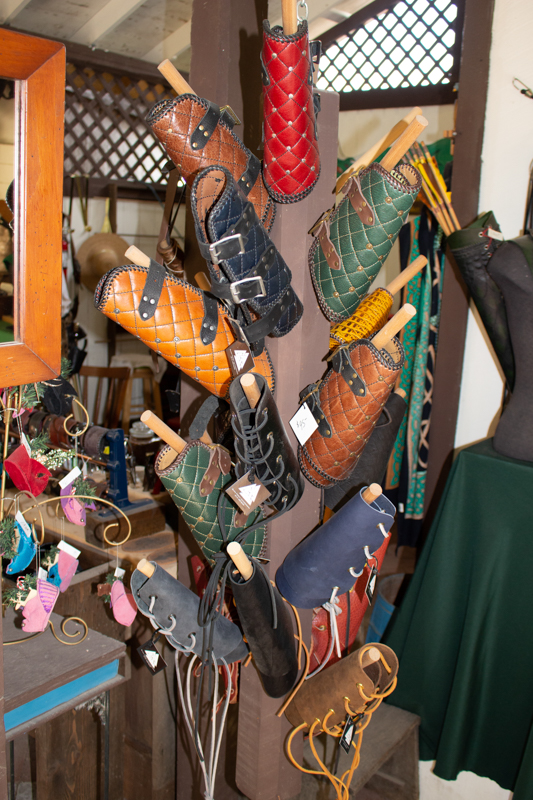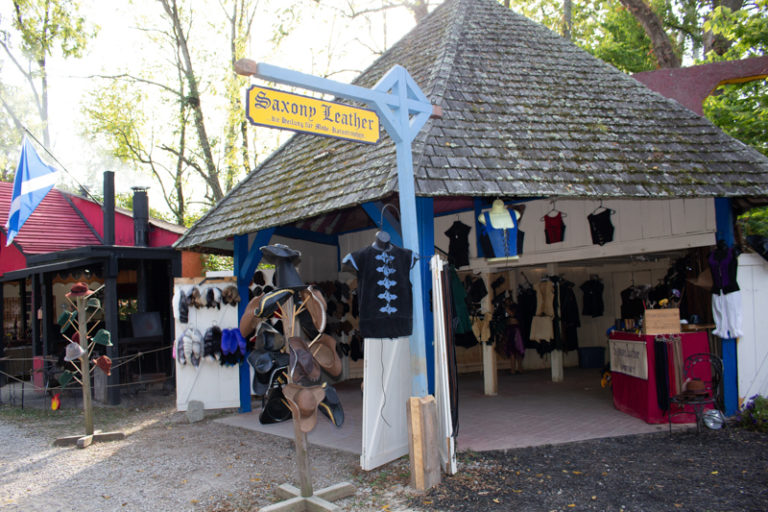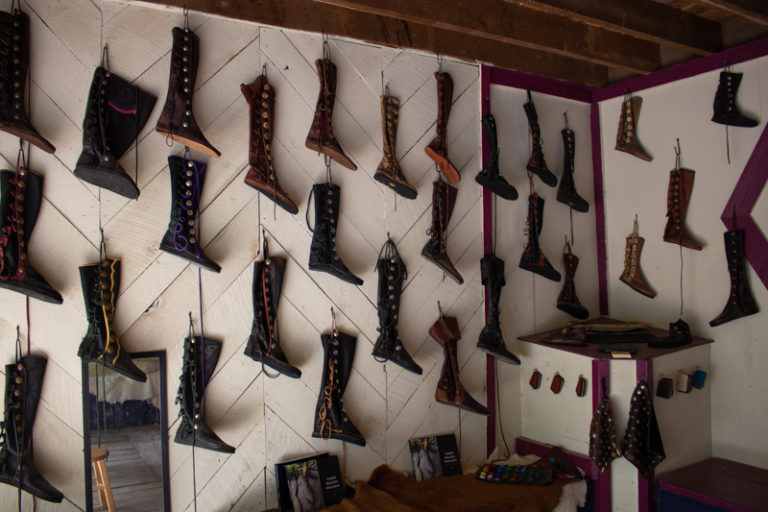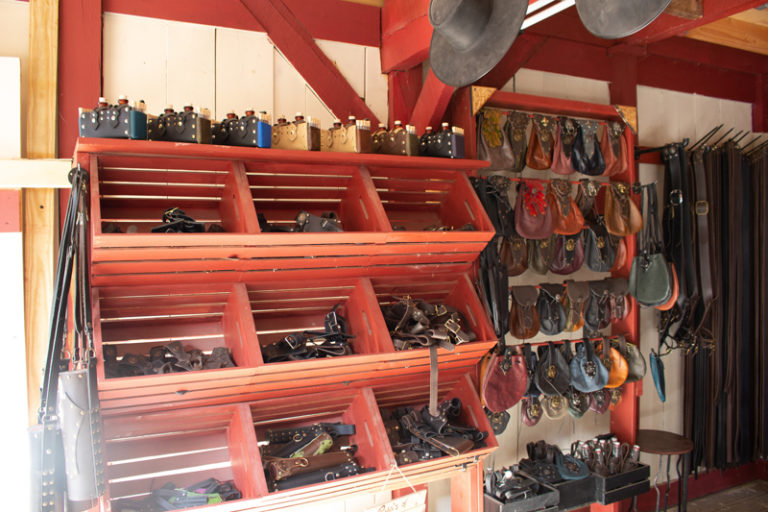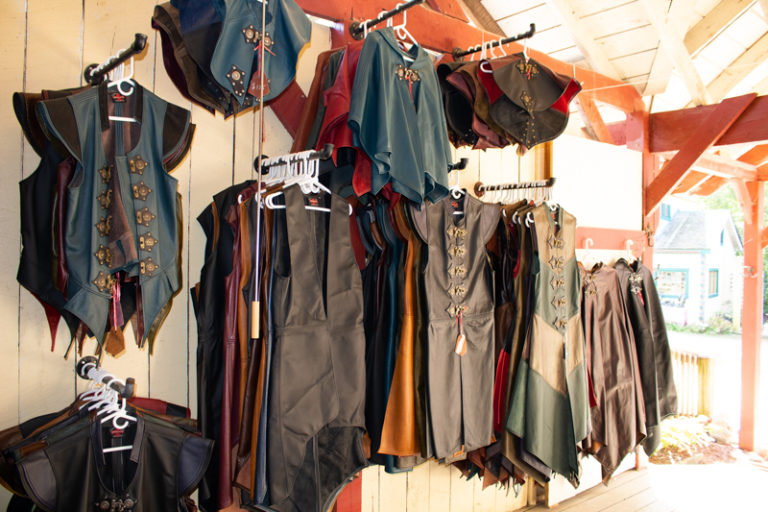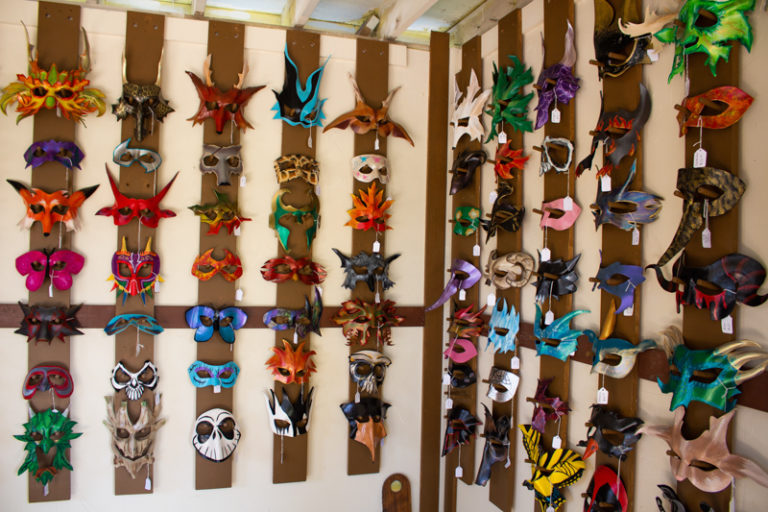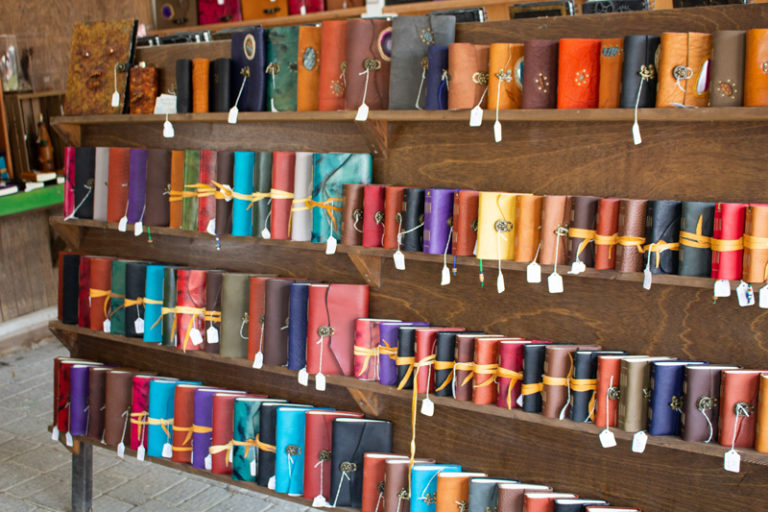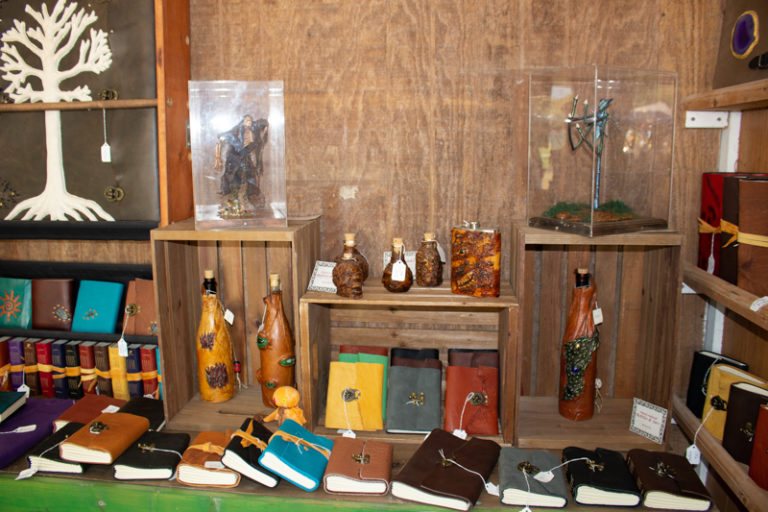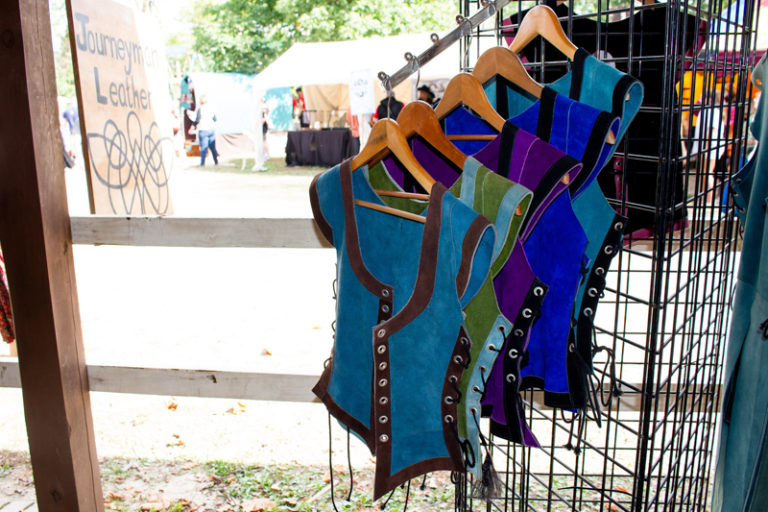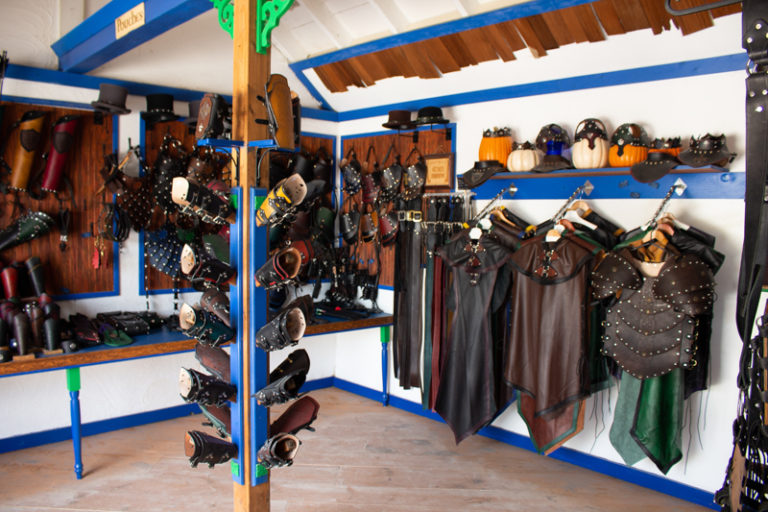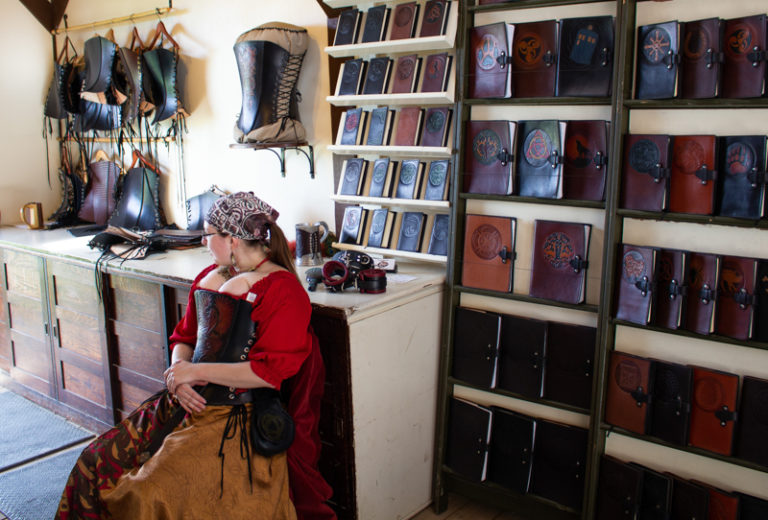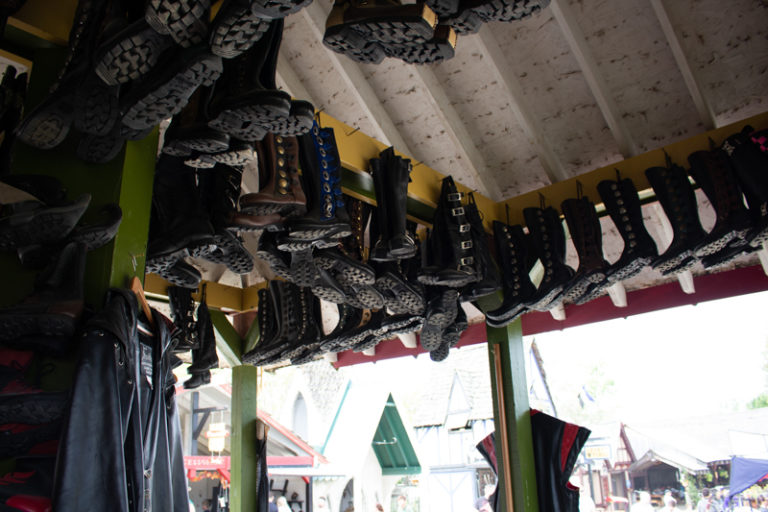I love the scent of leather. There is nothing else similar to it in the world. No substance which has quite the same mix of earthy masculine and faint hints of sweet feminine combined. It’s natural, not perfumed, and quite mild if treated right. Any time I walk into one of the many leatherworking booths at ORF I find myself inhaling deeply to maximize my intake of it.
If you have ever been to a ren faire, especially the Ohio Renaissance Festival, you know that the exuberance shown towards leather pieces knows no bounds. From belts to boots and pouches to pauldrons, just about everyone has something on their garb made from this tanned and treated bit of animal hide. We all have our personal favorites around the festival, and some of the booths are known for one item in particular. I have a pair of nine-buttons from Son of Sandlar, a girth belt from Brown Cow, a purse from Blue Flame Leather, a hat from Saxony Leather, and more pouches than you can count!
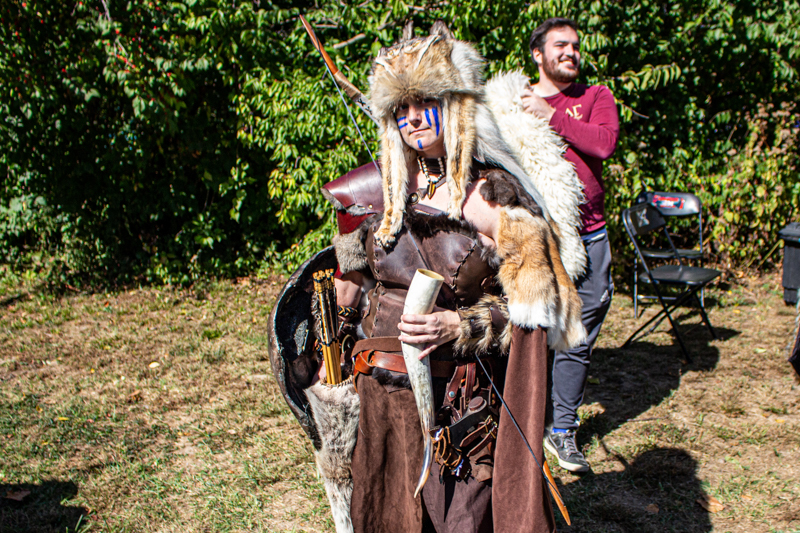
During the 2019 season there were over 15 different leather crafters on the faire grounds, some in booths and some in tents or wagons. I visited each one of their shops for a chance to chat and see what kind of pieces they had to offer. While many of the leatherworkers have their staples such as belts or pouches, I was thrilled to find that no two crafters have the same pieces or the same signature style. With a little observation, you can know a Brown Cow corset from a Saxony leather bodice, and in all likelihood, you’ll want both for different occasions.
I took some time with Chip Brown from Brown Cow Arts to talk more in-depth about what it takes to become a master leatherworker. He was kind enough to let us drop by his home and workshop to take a look at the process close up. Looking at his place, it’s easy to see how one can grow from project to passion, and from passion to profession. We had briefly discussed his beginnings as a leatherworker in our Building History blog post, but now I wanted to know more about what goes into the process at this professional craftsman level. Chip was happy to share.
Quality Leather produces quality pieces

Where does leather come from? Well, it comes from animals! Most leather is made from cowhide, although more unusual forms are available if you know where to source from. It is considered a by-product of the meat and dairy industry, comprising about 5% of the value of the animal and putting as much of the cow to use as possible. Leatherworkers typically buy wholesale, and – as opposed to mass-market leather which is sourced from overseas – many faire crafters source from within the US, locally if possible.
Leather is typically sold after the tanning process has been completed, as doing this yourself could add days or months to your work depending upon the method used. Thankfully the methods used during the Tudor era – which involved measuring innards onto the hide to soften the fur – are no longer part of the process
Nowadays there are two basic types of tanning processes that produce two distinct types of leather. ‘Chrom tan’, created by processing a hide with chromium bromide, is a soft and flexible leather that is well suited for flexible clothing pieces and pouches. ‘Veg tan’, created by processing hides in tannins from vegetable matter such as oak bark, produces a stiff and thick leather that can hold structure and take tooling and other detailing work. ‘Veg tan’ is what you’ll find belts and hard leather corsets are made of.
“Most people hear the term ‘top-grain leather’ and think it means the best…because it’s ‘top.’ But actually top-grain leather means the top layer of the hide has been cut off, leaving suede.” Chip explained. “The suede is then usually coated in vinyl (plastic) and printed with the texture of leather. When buying quality, hand-made leather pieces you want to look for ‘full-grain’ because that is the natural top of the hide and nothing has been removed. You get all of the unique and beautiful qualities and quirks of the hide. “
Tools do not make the artist, but they help
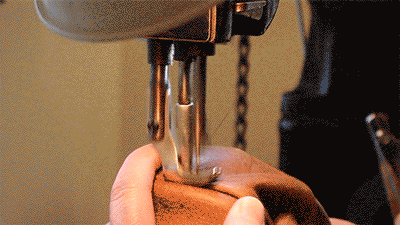
If you type “beginners leatherworking kit” into a search engine, you can get the basic tools for about $60 or so before shipping. They’re a good place to start if you want to dip your toes into the field or make a special gift for someone. For a professional crafter, the purchases get a bit more pricey. We’re talking $6000 sewing machines, 40-ton hydraulic presses, ventilated stations for dyeing and working with chemicals, and that’s all before discussing operating costs for a season run.

“Some folk think that taking this on is about getting rich quick. It’s more like going broke slowly.” Chip tells me with a laugh.
All these tools provide leathercrafters with the ability to streamline the process without sacrificing that handmade quality. They can delegate some of the labor like beveling edges and pressing grommets to minions (the loving term used for the apprentices) while keeping the more detailed and artisan portions of the work to the ‘master’ crafter.
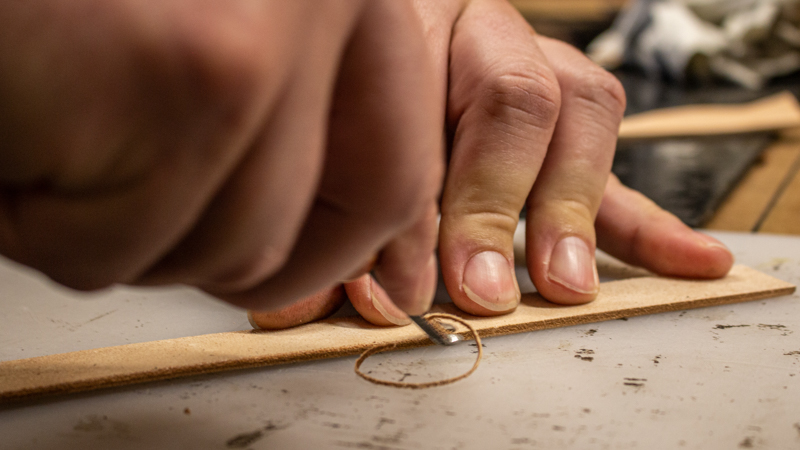
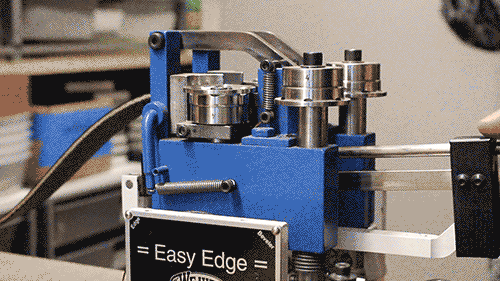
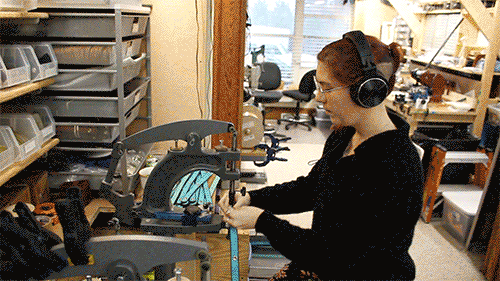
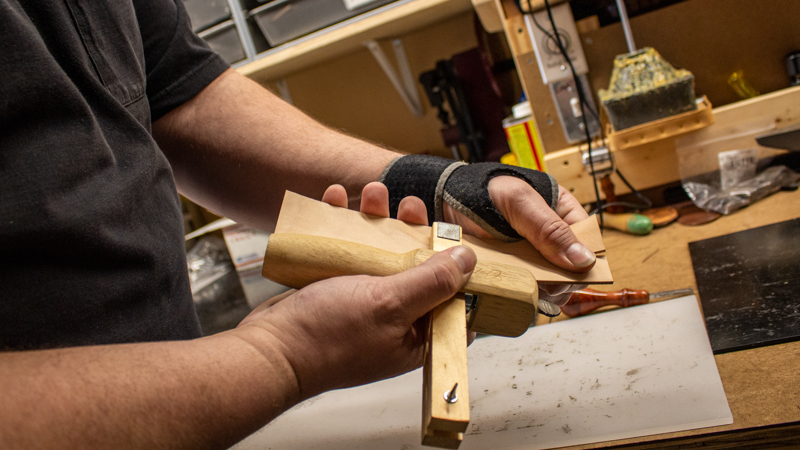
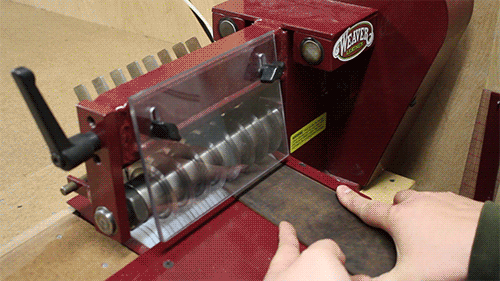
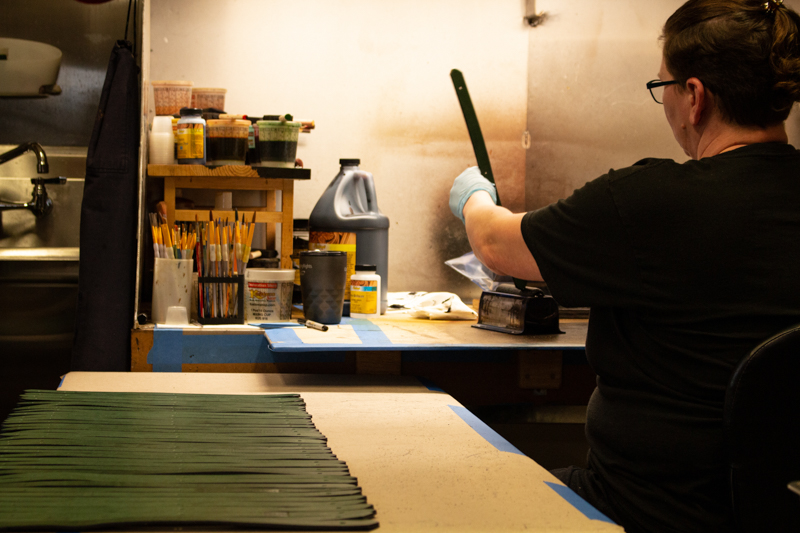
You can always see an Artisan’s Touch

Cutting, sewing, and adding hardware are only the start of a true master-worked piece of leather. It is the finishing touches that will set something you find at a venue such as the Ohio Renaissance Festival apart from mass-market goods.
Anyone can pick up a copy of the Al Stoleman Leatherwork Manual and start on their journey with enthusiasm. But what sets an artisan apart is the long years of practice and success through repeated failures that allow one to develop their own style.

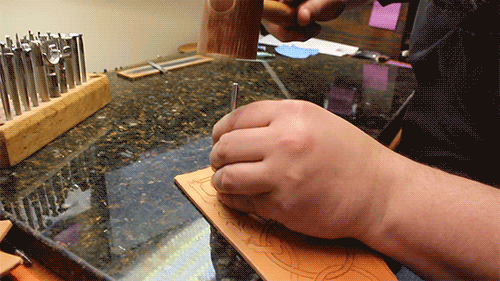
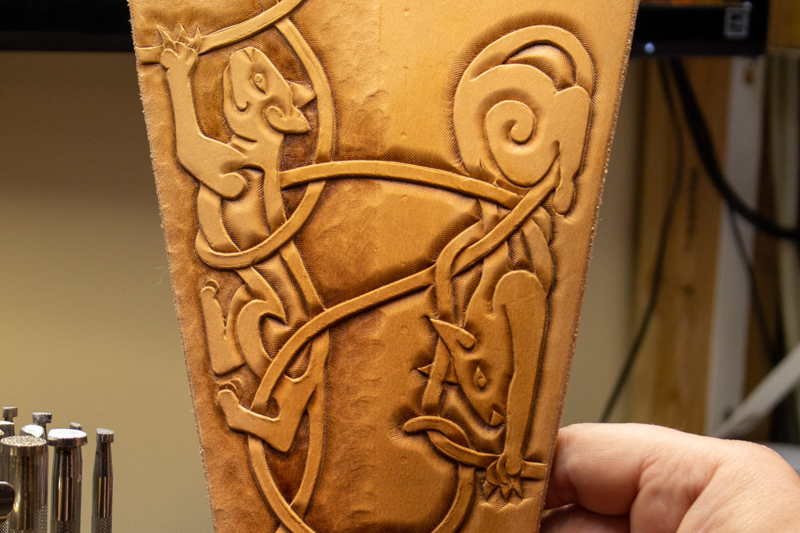
Brown Cow is well known for their Celtic knotwork and firm fitting corsets. Journeyman Leather carries vividly dyed soft suede pieces. The Goblin Trader takes things in a different direction with leather-bound books and delightfully creepy fetish dolls. One of the more nifty things that made an appearance last season were the little leather dragons from The Leather Arts Store! No two crafters do things the same way, and it’s a point of pride to have something from your favorite.



Unlimited Potential
This is just a glimpse at the breadth of potential when it comes to leatherworking and the kind of leather goods you can find at the Ohio Renaissance Festival. This is why many people turn to privately commissioned pieces from their favorite leathersmith. It’s a lot like bespoke garb in that you are coordinating with a professional who can help turn your dream into a reality. Check out some of the booths around faire and consider what kind of crafter’s style best fits what you have in mind!
Leather Goods From Around Faire
Leather Workers you can find at the Ohio Renaissance Festival
Minotaurs Labyrinth of Leather
Vllad the Viking Guy
For Leather After
Correction: in a pervious version of this post Heather was misidentified as Chip’s wife.

